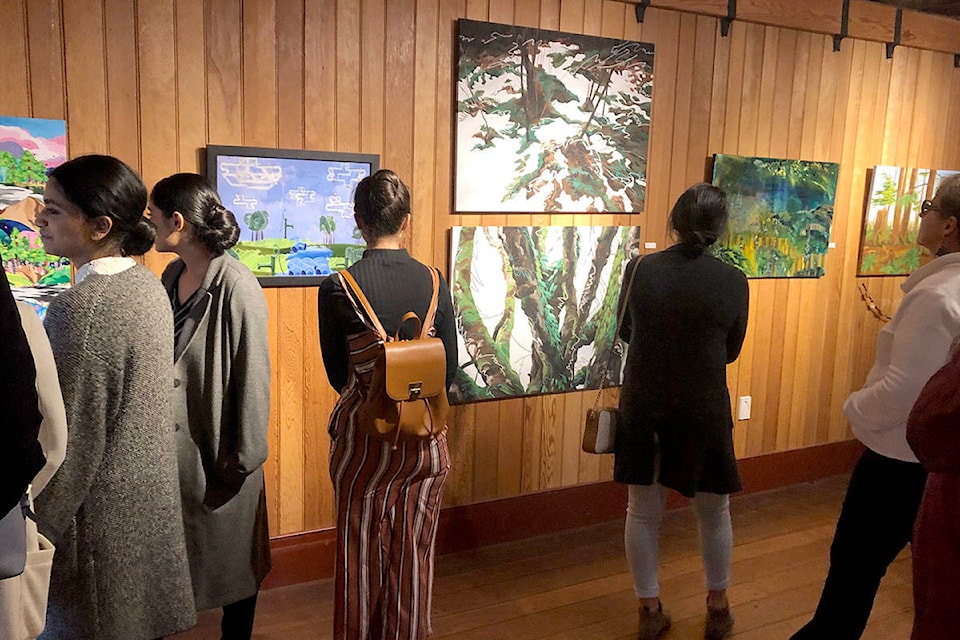Connections between landscapes, history, and politics underly an exhibition being hosted by Kwantlen Polytechnic University fine arts students.
The exhibition is based on artwork created from their experiences in Politics in the Landscape classes, which included field trips to both the Kwantlen First Nations Cultural Centre in Fort Langley and the Fort Langley National Historic Site.
The field trips were aimed at helping the students explore their identities as settlers on Indigenous land.
“It was great to physically be in the landscape” that she was responding to in her artwork, said KPU student Japneet Bal.
During their visit to the Kwantlen First Nations Cultural Centre, students attended a plant walk and studied traditional uses of native plant species along the Fraser River.
“The plant walk gave me new insight to our native plants here on the West Coast,” said student Alison Curtis, “and I feel that I have a better connection to my home because of it.”
The trip to the National Historic Site included an interpretive tour of the site.
It was “really inspiring and sparked a different thread than what I would have expected,” said student Sara Freitas. “I was interested in finding out that the fort had actually been built or moved three different times, and I used this to make up most of my final painting in response to the field trip.”
“Both field trips were a great experience for me to learn more about British Columbia’s history and landscape,” added Bal.
Throughout the course, students learned about the history of landscape art in North America and Europe.
“This historical knowledge will help frame our explorations of contemporary landscape art,” said instructor Liz Toohey-Wiese.
She said it would “allow students to critically engage” with the histories in creating their art.
“Our university is keen to build stronger relationships with local First Nations,” Toohey-Wiese added, “and this was a perfect opportunity to incorporate First Nations knowledge into our critical pedagogy.”
The Politics in the Landscape class was offered for the first time this spring, thanks to a grant from the Faculty of Arts Excellence and Advancement Fund.
The students’ final projects, using media such as drawing, painting, sculpture, video, and performance, form the “Contemporary Landscapes” exhibition at the Fort Langley National Historic Site until May 24.
